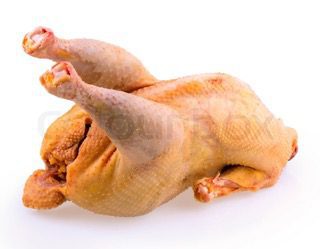

Dogs can safely consume chicken carcass, including skin, cartilage, and meaty bones, as they are a rich source of protein and essential minerals like calcium, magnesium, and phosphorus.
Chicken carcass provides dogs with protein for muscle development and tissue repair, while also boosting energy and regulating organ functions with essential minerals.
Cooked chicken bones can break and splinter, posing a risk of injury to the mouth and intestines, as well as a choking hazard. Raw or freeze-dried chicken carcass is recommended over cooked bones.
Raw feeders can incorporate chicken carcass into their dog’s raw diet, while freeze-dried or air-dried options are also available. Always supervise your dog when feeding chicken carcass to ensure safe consumption.
A chicken carcass refers to the bones, cartilage, and meat that remain after a chicken has been cooked or eaten. While dogs may enjoy the taste of chicken carcasses, there are some risks associated with their consumption. The bones can splinter and cause choking, blockages, or damage to the digestive system. Additionally, cooked bones can become brittle and break, causing sharp fragments that can puncture the stomach or intestines.
In extreme cases where a dog has ingested a chicken carcass and is showing signs of distress such as vomiting, diarrhea, or lethargy, it is important to seek veterinary attention immediately. X-rays may be necessary to determine if there are any blockages or damage to the digestive system.
Safer alternatives to chicken carcasses include raw meaty bones such as chicken necks or wings, or commercially available raw bones specifically designed for dogs.
If you choose to feed your dog a chicken carcass, it is important to supervise them closely and ensure that they do not swallow large pieces or attempt to swallow the bones whole. A safer serving idea would be to remove the meat from the bones and feed it separately, or to use the bones to make a homemade bone broth for your dog.